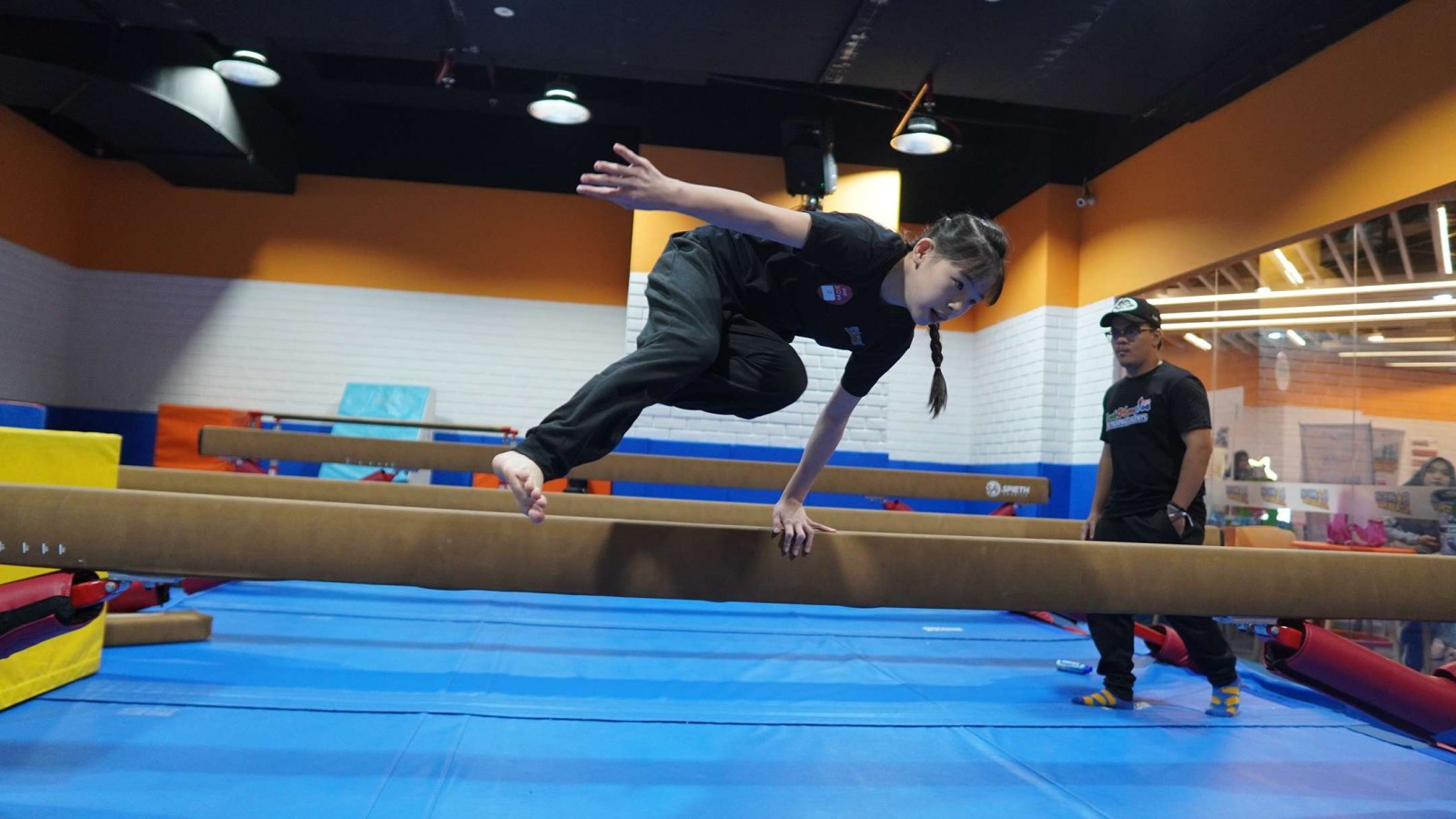Mengapa Bentuk Penting: Pentingnya Belajar Bentuk dalam Pendidikan Dini

Bentuk adalah komponen dasar dari dunia kita, dan memahaminya sangat penting dalam pendidikan usia dini. Mulai dari mengenali pola hingga mengembangkan pemahaman ruang, belajar tentang bentuk memainkan peran penting dalam perkembangan kognitif anak.
Artikel ini membahas tentang apa itu bentuk, jenis-jenis bentuk yang berbeda, pentingnya bentuk dalam pendidikan usia dini, dan metode yang efektif untuk mengajarkannya pada anak usia dini.
Dasar Pembelajaran Bentuk untuk Anak-anak
Bentuk adalah wujud benda-benda yang kita lihat di sekitar kita. Bentuk-bentuk itu bisa berupa lingkaran, kotak, segitiga, dan banyak lagi. Bentuk bisa datar seperti selembar kertas, atau bisa juga padat seperti bola atau kotak. Mempelajari bentuk membantu kita memahami bagaimana berbagai hal terlihat dan cocok satu sama lain di dunia kita.
Berikut adalah beberapa hal yang harus Anda ketahui sebagai orang tua jika Anda ingin mengajari anak-anak Anda tentang bentuk:
A. Bentuk-bentuk Simetris
Simetri adalah konsep dasar dalam geometri di mana sebuah bentuk dapat dibagi menjadi beberapa bagian yang merupakan bayangan cermin satu sama lain. Bentuk-bentuk simetris memiliki proporsi yang seimbang dan secara visual akan lebih enak dilihat.
Bentuk simetris yang umum termasuk lingkaran, kotak, dan segitiga sama sisi. Bentuk-bentuk ini dapat dibagi menjadi dua bagian yang identik di sepanjang satu atau lebih garis simetri.
B. Jenis-jenis Bentuk
Bentuk 2 Dimensi
Bentuk dua dimensi memiliki panjang dan lebar tetapi tidak memiliki kedalaman. Bentuk-bentuk ini datar dan dapat digambar di atas bidang. Contoh bentuk 2D meliputi:
Bentuk dua dimensi memiliki panjang dan lebar tetapi tidak memiliki kedalaman. Bentuknya datar dan dapat digambar pada bidang. Contoh bentuk 2D meliputi:
- Lingkaran: Bentuk bulat dengan semua titik berjarak sama dari pusat.
- Persegi: Bentuk dengan empat sisi yang sama panjang dan empat sudut siku-siku.
- Persegi panjang: Bentuk dengan sisi yang berlawanan sama panjang dan empat sudut siku-siku.
- Segitiga: Bentuk dengan tiga sisi dan tiga sudut.
- Oval: Bentuk yang menyerupai lingkaran yang direntangkan.
Bentuk 3 Dimensi
Bentuk tiga dimensi memiliki panjang, lebar, dan kedalaman. Bentuk-bentuk ini menempati ruang dan memiliki volume. Contoh bentuk 3D meliputi:
- Bola: Bentuk 3D yang bulat sempurna di mana semua titik memiliki jarak yang sama dari pusatnya.
- Kubus: Bentuk dengan enam sisi persegi yang sama.
- Silinder: Bentuk dengan dua dasar lingkaran paralel yang dihubungkan oleh permukaan melengkung.
- Kerucut: Bentuk dengan alas melingkar dan bagian atas yang runcing.
- Piramida: Bentuk dengan alas poligonal dan permukaan segitiga yang menyatu pada satu titik.
Pentingnya Belajar Bentuk dalam Pendidikan Usia Dini
Mempelajari bentuk sangat penting dalam pendidikan usia dini karena hal ini menjadi dasar untuk berbagai keterampilan kognitif dan perkembangan pada anak-anak. Hal ini juga memperkenalkan konsep matematika dasar, membentuk dasar untuk geometri dan pembelajaran matematika yang lebih lanjut.
Belajar tentang bentuk sangat penting dalam pendidikan usia dini karena beberapa alasan:
1. Pengembangan Pemahaman Ruang
Memahami bentuk membantu anak-anak mengembangkan pemahaman ruang, yaitu kemampuan untuk memahami dan berinteraksi dengan ruang di sekitar mereka. Mengenali dan menyesuaikan bentuk akan meningkatkan kemampuan mereka untuk memahami dan menelusuri lingkungan mereka.
2. Dasar untuk Keterampilan Matematika
Bentuk adalah blok bangunan geometri yang merupakan aspek penting dalam matematika. Pengenalan awal terhadap bentuk akan menjadi dasar bagi konsep matematika yang lebih lanjut, seperti luas, volume, dan pemahaman ruang.
3. Peningkatan Literasi Visual
Literasi visual adalah kemampuan untuk menafsirkan dan mengartikan dari informasi yang disajikan dalam bentuk gambar. Mempelajari bentuk dapat meningkatkan literasi visual dan memungkinkan anak-anak untuk mengenali pola, simbol, dan struktur di lingkungan mereka.
4. Pengembangan Bahasa
Mendeskripsikan bentuk dan sifat-sifatnya mendorong perkembangan kemampuan bahasa. Anak-anak belajar kosakata baru dan meningkatkan kemampuan mereka untuk mengartikulasikan pikiran mereka.
5. Kemampuan Pemecahan Masalah
Menyesuaikan bentuk dan memecahkan teka-teki yang melibatkan bentuk akan meningkatkan kemampuan memecahkan masalah. Anak-anak belajar berpikir kritis dan kreatif untuk mencapai hasil yang diinginkan.
6. Perkembangan Kognitif
Mengidentifikasi dan mengelompokkan bentuk-bentuk akan menstimulasi perkembangan kognitif. Anak-anak akan belajar mengamati, membandingkan, dan membedakan berbagai bentuk, yang akan meningkatkan kemampuan analisis mereka.
Cara Mengajarkan Bentuk kepada Anak dengan Permainan yang Menarik
Mengajarkan bentuk kepada anak-anak dapat menjadi proses yang menyenangkan dan menarik ketika menggunakan permainan dan kegiatan yang menarik minat mereka. Berikut adalah beberapa cara yang efektif dan menyenangkan untuk mengajarkan bentuk kepada anak-anak:
1. Permainan Menyortir Bentuk
Kegiatan ini memberikan anak-anak berbagai macam benda dalam berbagai bentuk dan meminta mereka untuk menyortir benda-benda ini ke dalam kategori berdasarkan bentuknya.
Kegiatan ini meningkatkan kemampuan pengenalan bentuk dan kategorisasi. Kegiatan ini juga meningkatkan kemampuan motorik halus saat anak-anak memegang dan menyortir benda-benda tersebut.
Contoh: Gunakan benda-benda sehari-hari seperti balok, kancing, dan mainan. Sediakan tempat sampah atau baki terpisah yang diberi label dengan bentuk yang berbeda (lingkaran, persegi, segitiga, dan lain-lain) dan biarkan anak-anak menempatkan benda-benda tersebut di tempat sampah yang benar.
2. Permainan Mencocokkan Bentuk
Kegiatan selanjutnya yang bisa Anda coba adalah dengan membuat kartu dengan bentuk yang berbeda dan meminta anak mencocokkan kartu tersebut dengan benda-benda yang memiliki bentuk yang sama, permainan ini memperkuat pengenalan bentuk dan meningkatkan kemampuan memori.
Contoh: Gambar atau cetak kartu dengan berbagai bentuk. Letakkan kartu-kartu tersebut dan sediakan benda-benda (seperti mainan berbentuk atau potongan-potongan) yang sesuai dengan kartu-kartu tersebut. Dorong anak-anak untuk menempatkan setiap benda pada kartu yang cocok.
3. Berburu Bentuk
Anda juga bisa mengajarkan anak Anda belajar bentuk dengan mengadakan perburuan bentuk, di mana anak-anak mencari benda-benda di lingkungan mereka yang sesuai dengan bentuk tertentu.
Kegiatan ini mendorong pengamatan dan memperkuat konsep bentuk di dunia nyata.
Contoh: Berikan anak-anak daftar bentuk yang harus ditemukan (lingkaran, persegi, segitiga, dan lainnya). Mereka dapat melihat sekeliling rumah, ruang kelas, atau taman bermain dan menunjukkan atau mengumpulkan benda-benda yang sesuai dengan bentuk-bentuk yang ada di daftar mereka.
4. Proyek Seni Bentuk
Berikutnya adalah dengan memasukkan bentuk ke dalam proyek seni di mana anak-anak menggunakan perangko bentuk, memotong bentuk dari kertas berwarna, atau menggambar bentuk untuk membuat gambar.
Hal ini menggabungkan kreativitas dengan pengenalan bentuk dan membantu mengembangkan keterampilan motorik halus.
Contoh: Sediakan kertas berwarna, gunting, lem, dan spidol. Anak-anak dapat menggunting bentuk dan menempelkannya ke kertas yang lebih besar untuk membuat gambar, seperti rumah dengan alas persegi, atap segitiga, dan jendela melingkar.
5. Membentuk Plastisin
Menggunakan plastisin untuk membentuk berbagai bentuk akan memperkuat pemahaman bentuk melalui permainan langsung dan meningkatkan keterampilan motorik halus.
Contoh: Sediakan plastisin dan pemotong bentuk (atau gunakan tangan untuk membentuk bentuk). Mintalah anak-anak untuk membuat berbagai bentuk seperti lingkaran, kotak, dan segitiga dengan plastisin.
6. Menjiplak Bentuk
Menjiplak bentuk adalah metode yang efektif untuk membantu anak-anak belajar dan mengenali bentuk. Anda bisa menyediakan lembar kerja atau membuat sendiri dengan berbagai bentuk untuk dijiplak oleh anak-anak.
Menjiplak bentuk membantu mengembangkan keterampilan motorik halus dan memperkuat kemampuan mengenali dan menggambar bentuk.
Contoh: Mencetak atau menggambar bentuk di atas kertas. Berikan pensil, krayon, atau spidol kepada anak untuk menjiplak bentuk-bentuk tersebut, sehingga membantu mereka belajar menggambar setiap bentuk secara akurat.
Belajar Bentuk Itu Penting!
Belajar tentang bentuk adalah aspek penting dalam pendidikan anak usia dini yang berdampak pada berbagai bidang perkembangan. Jika anak Anda membutuhkan bantuan dalam mempelajari bentuk, salah satu cara untuk mendukung mereka adalah dengan mendaftarkan mereka dalam program Prasekolah dan Taman Kanak-kanak di Rockstar Academy.
Di Rockstar Academy, anak Anda dapat merasakan kurikulum prasekolah dan taman kanak-kanak terlengkap, berpartisipasi dalam berbagai kegiatan fisik, serta mengikuti acara dan kompetisi yang dirancang untuk berbagai usia, tingkat keterampilan, dan minat.
Berbagai pengalaman ini memberikan kesempatan penting bagi anak-anak untuk berkembang secara akademis, sosial, dan emosional, serta unggul dalam bidang matematika untuk taman kanak-kanak.
Selain itu, Rockstar Academy menawarkan kelas uji coba gratis bagi siapa saja yang tertarik untuk menjelajahi program kami. Jika Anda tertarik, pastikan untuk menghubungi Rockstar Academy hari ini juga!
FAQ
Mengapa bentuk penting dalam pendidikan anak usia dini?
Bentuk itu penting karena membantu anak-anak mengembangkan pemahaman ruang, kemampuan matematika dasar, literasi visual, perkembangan bahasa, kemampuan memecahkan masalah, dan perkembangan kognitif.
Pada usia berapa sebaiknya anak-anak mulai belajar tentang bentuk?
Anak-anak dapat mulai belajar tentang bentuk sejak usia 2 tahun. Pengenalan bentuk sederhana dapat dimulai pada usia ini, dengan pemahaman yang lebih kompleks yang akan berkembang seiring dengan bertambahnya usia.
Bagaimana cara membuat pembelajaran bentuk menjadi menyenangkan bagi anak saya?
Gabungkan permainan, lagu, dan kegiatan langsung ke dalam sesi belajar. Gunakan benda-benda sehari-hari untuk mengajarkan bentuk dan dorong anak Anda untuk menemukan bentuk-bentuk di lingkungannya.
Apa saja benda sehari-hari yang dapat membantu mengajarkan bentuk?
Benda-benda rumah tangga yang umum seperti piring (lingkaran), buku (persegi panjang), dadu (kubus), dan kaleng (silinder) dapat digunakan untuk mengajarkan bentuk. Menunjukkan bentuk-bentuk ini dalam kehidupan sehari-hari akan membantu memperkuat pembelajaran.



